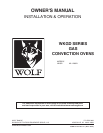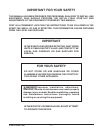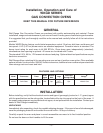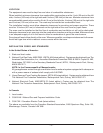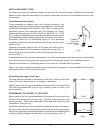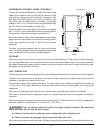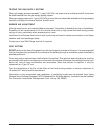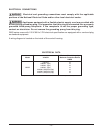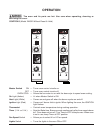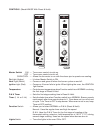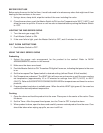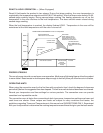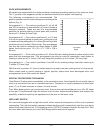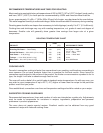
– 7 –
TESTING THE GAS SUPPLY SYSTEM
When gas supply pressure exceeds
1
/2 psig (3.45 kPa), the oven and its individual shutoff valve must
be disconnected from the gas supply piping system.
When gas supply pressure is
1
/2 psig (3.45 kPa) or less, the oven should be isolated from the gas supply
system by closing its individual manual shutoff valve.
BURNER AIR ADJUSTMENT
Although main burner air is adjusted before shipment, it should be checked at the time of installation.
Excessive air will cause flames to lift off a burner when cold or may cause flash-back during normal
cycling of oven, particularly when propane gas is used.
Insufficient air will cause flames to burn with a yellow tip and result in carbon accumulation in the flame
chamber and heat exchanger tubes.
Contact your local Wolf Range servicer if required.
VENT SYSTEM
DO NOT obstruct the flow of flue gases from the flue located on the rear of the oven. It is recommended
that the flue gases be ventilated to the outside of the building through a ventilation system installed by
qualified personnel.
Ovens may use an optional down draft diverter flue method. This optional down draft diverter must be
purchased from the oven manufacturer and vented to the outside; otherwise, the installation of any such
device will void all oven certifications and warranties. When the diverter is supplied, it may be
connected to a Type “B” vent.
From the termination of the flue to the filters of the hood venting system, a minimum clearance of
18 inches (457 mm) should be maintained.
Information on the construction and installation of ventilating hoods may be obtained from
Vapor
Removal from Cooking Equipment
, NFPA Standard No. 96 (latest edition), available from the National
Fire Protection Association, Batterymarch Park, Quincy, MA 02269.



